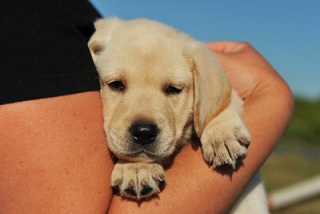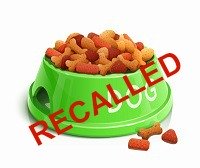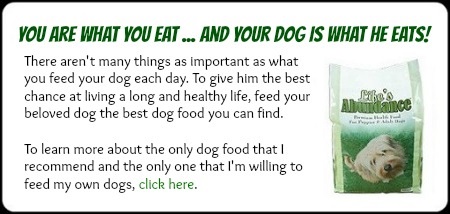- Home
- About Us
- Contact Us
- Privacy Policy
- What's New!
Dog Care Tips...
Information for the New Dog Owner

These dog care tips are designed to help you, the new dog owner, get started on the right foot. With these tips you'll begin to know how to take the best care of their new canine companion.
Some of the pet care information below may seem obvious to some people, but the tips could be critical to others.
How to use these dog care tips...
They say that “information is power” and I believe that’s true. What you don’t know most certainly CAN hurt you...and your dog. So please read all these tips and apply the recommendations as they apply to your particular situation. Also, make sure that everyone in your house knows these tips.
Dog Care Tips for BEFORE you bring him home
I don’t mean to scare anyone but without a little thought and effort on your part, your home could become a death-trap for a new puppy. Just as you would child-proof your home before bring a toddler into your home, you should do the same for a new puppy.
Dogs by nature (and especially puppies) are very curious about their new surroundings. If they can get into trouble, they most likely will. So please take a few minutes to review the following dog care tips for making your home a safe environment for your new dog.
1. Prevent access to household dangers
Many common items in your home can be deadly to your dog. This list covers most of the common hazards:
- Electrical cords – Puppies in particular are apt to chew on anything in sight because they are teething. Make sure that all power-cords are kept away from areas where the puppy might find them.
- Rugs – A puppy and young dog can quickly ruin a rug in several ways. Of course, they can urinate, defecate, or vomit on it. But they can also chew it. The problem here is not only the damage to your possessions, but also the possibility of threads from the rugs becoming entwined in your dog’s intestine. This could result in the need for surgery to remove the treads.
- Panty hose – These are particularly dangerous because your dog will be very attracted to them since they may carry your scent. But they have the same potential to become entwined in your dog’s digestive system.
- Small items – These would include such things as coins, marbles and other small toys. The danger with these items is that they could become lodged in your puppy’s throat or, if swallowed, in his intestine.
- Trash – Your trash-can may be full of items that would be hazardous to your pet’s health. A good example is sanitary napkins and tampons. Being highly absorbent, these items could easily become lodged in your dog’s intestinal tract if they’re eaten. It’s best to keep such things out of the reach of your dog.
- Poisons - See...
2. Protect your property from your puppy
Perhaps this shouldn't be in our list of dog care tips since it's more of a home care tip. But, it is something to keep in mind...
You see, not only do you need to protect your dog from things in your house, but you need to protect the things in your house from your dog. This is especially true when your dealing with a puppy...
As I pointed out above, puppies are apt to chew anything in sight. This includes the legs and rungs on wooden tables and chairs. While this is not general dangerous for the puppy, it can do extensive and unsightly damage to your furniture that could be difficult and expensive to repair or replace.
If you can't remove tables and chairs from an area where your puppy will be active (especially if he'll be left alone in the area for any length of time), find a way to completely cover all exposed surfaces that your puppy can reach.
3. Be prepared for house-training accidents
If you’ve just brought home a new puppy, there will be accidents...you can bet money on it. It will take some time before your puppy gains complete control over his bladder and before he learns what’s expect of him. But, they will be less traumatic if you’re prepared.
A rug cleaner designed to eliminate urine stains and odors is an absolute must...especially if you have carpeting. Many products on the market will only mask the urine smell. While you may not be able to smell it any more, you can bet that your dog will...unless you use a product designed to eliminate the smell.
Other products (the ones containing ammonia) may actually make the urine smell more pronounced. And if your dog can smell it, he'll be encouraged to use that spot again and again. That’s why it’s essential to use a product that will completely eliminate the odor from your carpet.
Dog Care Tips for AFTER you bring him home
The dog care tips in this section are things you should plan to do as soon as you bring your dog home...though you can begin planning for them beforehand.
1. Get your dog some good identification
In case your puppy ever wanders off, he’ll need some form of identification with at least your phone number on it.
The simplest and most common identification method is to attach a tag with your contact information to your dog’s collar. This works fine as long as the collar is not separated from your dog or the tag from the collar.
The most reliable identification method is to have your dog micro-chipped by your veterinarian. In this procedure a tiny micro-chip is implanted between your puppy’s shoulders. The procedure is painless and relatively inexpensive, and the results are fool-proof.
I recommend that you use both forms of identification. The dog tag is a quick way for anyone who finds your dog to get in touch with you. The micro-chip makes a good fall-back should the collar or tag get lost.
2. Socialize your puppy early...before it’s too late
The value of early socialization for your puppy cannot be over stated. By introducing him early in life (prior to 6 months of age) to various types of people and animals you’ll be helping to prevent him from developing unwarranted fears.
You’ll also help to develop your dog’s confidence in dealing with the world.
- Various people: Introduce your puppy to as many different types of people (old, young, handicapped, of different nationalities; people wearing uniforms, hats, helmets; people in wheelchairs, pushing strollers, etc.), but always within a controlled environment.
- Other Dogs: If your dog is not exposed to other dogs as a puppy, he will have trouble interacting with other dogs as an adult. These un-socialized dogs tend to be very aggressive with other dogs.
To avoid this problem, you should frequently let your puppy interact with other puppies and dogs in a controlled environment.
Warning: Keep young puppies away from dogs that may be unhealthy. If you’re not familiar with a particular dog and don’t trust that it’s been vaccinated, don’t let your puppy near it.
- Children: Dogs that are not exposed to children when they’re puppies can become dangerous around children as adults. Seek out opportunities for your puppy to interact with young children, but again you must control the situation.
Warning: Don’t let the children play too rough with or hurt the puppy. And, of course, you don’t want to allow the puppy to nip at any children.
Everything about all these interactions must be positive so that the puppy gains the confidence about such interactions in the future. A fearful dog can be a dangerous dog.
3. Give your puppy and dog plenty of exercise
Just leaving your dog outside for a few hours is not what I’m talking about...nor is it sufficient!
Here are some tips for exercising your puppy or dog:
- Unless you have other dogs, “proper exercise” will always involve you. If you have other dogs and they like to play together, they may get enough exercising without you.
- For the first 4 months, focus on playing with your puppy rather than walking him. Too much exercise at this age will stress your puppy’s growing body.
- Play games on the grass or carpeting rather than on ceramic, dirt or paved surfaces (these can be too stressful for your puppy’s young bones and tissues).
- Exercise frequency varies from breed to breed and with age. Note these guidelines and adjust for your puppy:
- For very high-energy breeds (such as Pointers or Dalmatians), you’ll need to exercise your puppy between 2 and 4 times a day (increasing as he gets older) for 20 minutes.
- For low-energy breeds (such as “Toy” breeds), you’ll only need to exercise your puppy once or twice a day for 5 minutes or so.
- If your dog has trouble settling down at night, it may be an indication that he’s not getting enough exercise during the day. But if he seems exhausted after an exercise session, you may be overdoing it.
- Avoid playing the following games with young puppies: chasing, teasing, wrestling and tug-of-war. These games can frustrate your puppy and may encourage aggressive behaviors such as nipping.
- Play with a puppy by getting down on the floor with him and making yourself reachable. You can play with him just like you would a crawling baby; roll over with him, cuddle and hug, roll balls, toss soft toys, etc. If he misbehaves, don’t yell, hit or punish him in any way. Remember he’s learning just like a human baby and you wouldn’t punish a baby, would you?
Remember that while you’re giving your puppy the exercise he needs, you’re also establishing a lasting bond with a little creature that will love you unconditionally for the rest of his life. If that doesn’t motivate you to play with him, I don’t know what will.
More Dog Care Tips...
These dog care tips should provide you with much of what you need to get off to great start with your new dog. You’ll find a lot more pet care information in other pages of this site.
- Discover how to find a good vet for your new dog and what to expect at your first visit. Go to Choosing a Veterinarian.
- Does it make sense for you to get Dog Health Insurance?
- Dogs and Chocolate are a bad combination. What to do if your dog eats chocolate.






